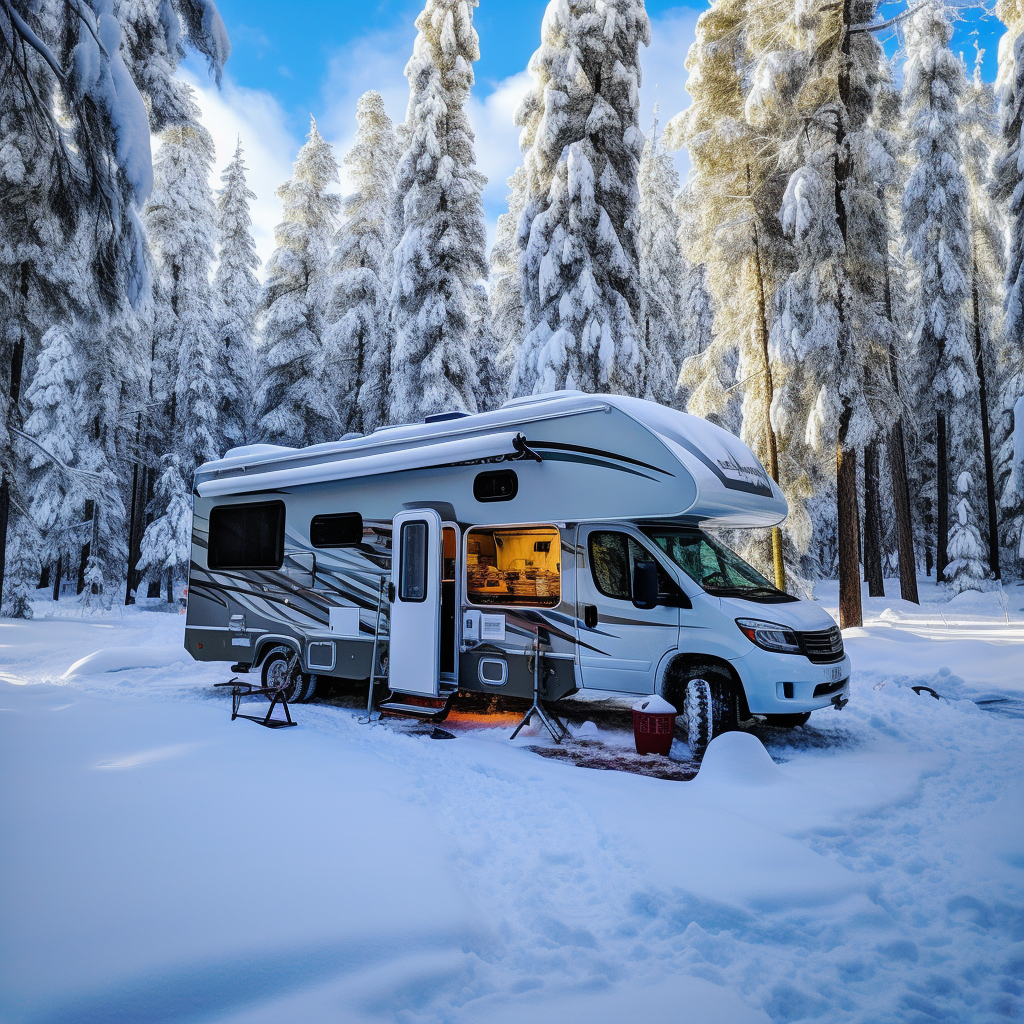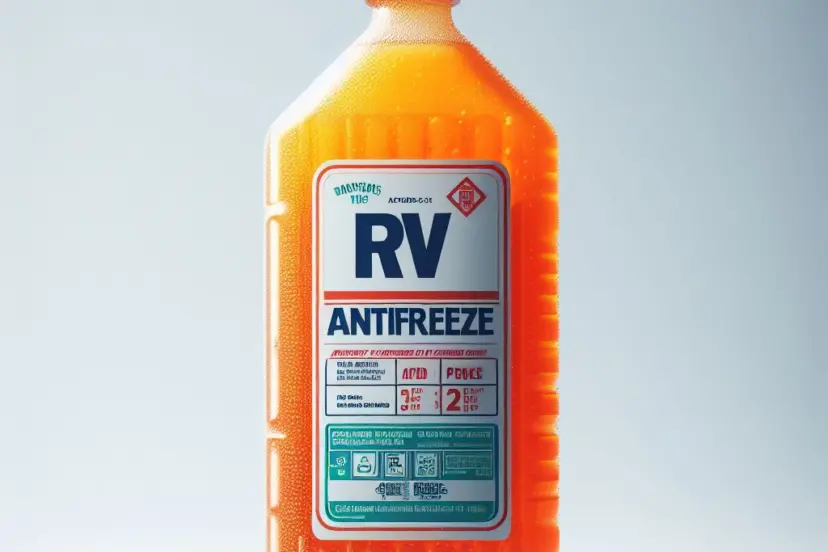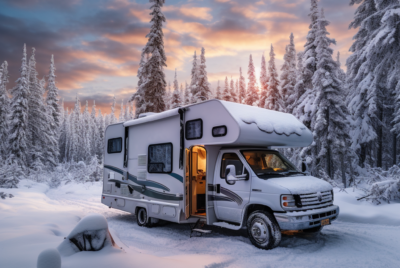How to Use RV Antifreeze to Winterize Your Camper
As the cold months approach, it’s time for many camper enthusiasts to prepare their rigs for winter storage. Properly winterizing your camper is crucial to prevent damage from freezing temperatures. One essential step in this process is using RV antifreeze to protect your plumbing system. In this guide, we’ll walk you through the steps on how to use RV antifreeze effectively to winterize your camper.
Why Winterize Your Camper with RV Antifreeze?
Your camper’s plumbing system, including water lines and tanks, can be vulnerable to freezing temperatures. When water freezes, it expands and can lead to costly damage like burst pipes and cracked fixtures. RV antifreeze comes to the rescue because it remains in liquid form even in the coldest weather, ensuring your plumbing system is protected.
What You’ll Need
Before you begin, gather the following materials:
- RV antifreeze (usually 2-3 gallons, depending on your camper’s plumbing system)
- Water heater bypass kit
- Water pump converter kit
- Tubing
- Basic hand tools
the top 7 RV antifreeze products
| Product | Description | Key Differentiators | ||
|---|---|---|---|---|
| 1. Splash -50°F | Splash -50°F RV & Marine antifreeze is formulated to protect your RV’s water system in freezing conditions. It’s nontoxic and safe for all plumbing materials and includes a burst protection formula. |
|
||
| 2. Prestone All-Weather | Prestone’s All-Weather RV antifreeze is designed to protect your RV’s plumbing system in both cold and warm temperatures. It’s non-toxic and compatible with all plumbing materials. | Versatility in temperature protection, non-toxic. | ||
| 3. Star brite -50°F |
|
|
||
| 4. PEAK RV & Marine -50°F | PEAK’s RV & Marine antifreeze is designed for protection in temperatures as low as -50°F. It’s non-toxic and safe for all plumbing materials. | Extreme cold protection, non-toxic formula. | ||
| 5. Century Chemical RV Antifreeze | Century Chemical offers an RV antifreeze that’s safe for all plumbing systems and provides protection against freezing down to -50°F. | Wide temperature protection, safe for all systems. | ||
| 6. Prestone -70°F | Prestone’s -70°F RV antifreeze is designed for extreme cold conditions, providing superior protection against freezing. It’s non-toxic and safe for all plumbing materials. | Exceptional cold weather protection, non-toxic. | ||
| 7. ZECOL RV Antifreeze | ZECOL’s RV antifreeze offers protection against freezing down to -50°F. It’s non-toxic and suitable for all plumbing systems. | Cold weather performance, non-toxic formula. |
These are some of the top RV antifreeze products available, and they differ mainly in terms of their temperature protection capabilities, compatibility with plumbing materials, and whether they include additional features like burst protection formulas. RV owners should choose the product that best suits their specific needs and climate conditions. Always follow the manufacturer’s instructions for proper use and disposal.
Propylene glycol RV antifreeze
Propylene glycol RV antifreeze is a popular and reliable choice for protecting your RV’s plumbing system during the winter months. Unlike ethylene glycol-based antifreeze, propylene glycol is non-toxic and safe for both humans and pets, making it an environmentally friendly option. This RV antifreeze provides excellent freeze protection, preventing costly damage to pipes and fixtures, even in extremely cold temperatures. Its compatibility with various plumbing materials and its ability to safeguard against corrosion make it a preferred solution for many RV enthusiasts. When it comes to winterizing your RV and ensuring the longevity of your plumbing system, propylene glycol antifreeze is a dependable and responsible choice.
Automotive Antifreeze VS Marine Antifreeze
Automotive antifreeze and marine antifreeze serve similar functions in preventing freezing and corrosion but are formulated for distinct applications. The key difference lies in their composition and intended use.
Automotive antifreeze, commonly known as engine coolant, is specifically designed to regulate the temperature of internal combustion engines in vehicles. It contains a mixture of water and ethylene glycol (or propylene glycol) and includes additives to protect the engine from overheating, corrosion, and scale buildup. While it effectively prevents freezing in automobile engines, it is not suitable for marine applications due to its toxicity, which can harm aquatic life.
On the other hand, marine antifreeze is tailored for use in boats and recreational vehicles (RVs). It is typically formulated with propylene glycol, making it non-toxic and safe for both RV plumbing systems and the environment. Marine antifreeze is used to protect water systems, including potable water lines, plumbing fixtures, and onboard amenities, from freezing during colder seasons. It also serves as a corrosion inhibitor, safeguarding marine engines and components.
When it comes to disposing of RV antifreeze, responsible and environmentally conscious methods should be followed. Since RV antifreeze is usually non-toxic (especially propylene glycol-based ones), it is often biodegradable and safe for the environment when used as directed. To dispose of RV antifreeze properly:
- Check Local Regulations: First, check with your local waste disposal facility or recycling center for specific guidelines on disposing of RV antifreeze. Regulations may vary depending on your location.
- Reuse or Recycle: If possible, consider reusing RV antifreeze for the next winterizing season if it remains uncontaminated. Alternatively, some recycling centers may accept it for proper disposal or recycling.
- Do Not Dump Into Waterways: Never pour RV antifreeze directly into waterways, storm drains, or onto the ground. This can harm aquatic life and the environment.
- Use Dilution: If you need to dispose of RV antifreeze, you can dilute it with water to reduce its concentration. This can be done before proper disposal, but again, check local regulations for guidance.
- Follow Manufacturer’s Instructions: Always follow the manufacturer’s instructions for disposing of RV antifreeze, as some products may have specific recommendations.
By following these responsible disposal practices, RV owners can ensure that they protect the environment while properly managing RV antifreeze waste.
Antifreeze plays a crucial role in protecting an RV’s freshwater system, especially during cold winter months when freezing temperatures can cause significant damage to plumbing lines, holding tanks, and fixtures. Here’s a closer look at how antifreeze is used in an RV’s freshwater system and its importance in preventing freezing:
1. Freezing Point of Water: The freezing point of pure water is 32°F (0°C). When temperatures drop below this point, water can freeze, expand, and potentially damage RV plumbing systems. In colder climates, it’s essential to take measures to prevent freezing.
2. Holding Tanks: RVs have holding tanks for fresh water, gray water (from sinks and showers), and black water (from toilets). These tanks are typically located beneath the RV and are susceptible to freezing if not protected.
3. P-Traps: P-traps are U-shaped pipes in plumbing fixtures (like sinks and showers) that hold a small amount of water to prevent sewer gases from entering the RV. In freezing temperatures, these traps can freeze and crack, allowing gases to enter.
4. RV Plumbing Lines: RVs have a network of water lines that supply fresh water to faucets, showers, toilets, and appliances. These lines, if not properly winterized, can freeze, expand, and rupture, leading to leaks and costly repairs.

How to get Antifreeze into RV Lines
- Drain Tanks and Water Heater: Start by removing inline water filters and bypassing them before draining. Empty the freshwater holding tank, water heater, and flush out gray and black water tanks.
- Open and Drain Faucets: Utilize your water pump to empty faucets and low-point water drain lines. Be sure to recap all drains and close the faucets when done.
- Bypass the Water Heater: Use a water heater bypass kit to prevent wasting antifreeze. This step can save you six to ten gallons of RV antifreeze.
- Connect Antifreeze to the Water Pump: Install a water pump converter kit and connect tubing to the water pump, leading to a one-gallon jug of RV antifreeze.
- Pressurize the System: Turn on the water pump to pressurize the system.
- Start Close: Begin with the pump’s nearest faucet, opening both hot and cold valves until pink-colored antifreeze appears.
- Repeat for Every Faucet: Repeat the process for all faucets, starting with the closest to the farthest. Don’t forget the outside shower. Close the taps when finished.
- Protect Your Drains: To prevent water from freezing in drains, pour a cupful of antifreeze down each drain and add some to the toilet, flushing it into the holding tank. Additionally, turn off your water heater’s electric heating element for added protection in storage.
Additional Tips for Winterizing Your Camper
- Consider investing in a specially designed camper cover to protect it from the elements.
- Cover your camper’s tires to prevent weather-related damage.
- Add fuel stabilizer to your camper’s gasoline to keep it in good condition during storage.
- Remove batteries and store them in a cool location to prevent damage.
- Inspect and repair the exterior of your camper before storing it.
- Clean the interior and consider laying down pest traps to keep critters at bay.
Now that you’ve successfully winterized your camper using RV antifreeze, you can rest assured that it will be in excellent condition when warmer weather returns.
Conclusion
Winterizing your camper is a vital step in ensuring its longevity and preventing costly damage. By using RV antifreeze and following these steps, you can safeguard your camper’s plumbing system and enjoy worry-free camping adventures when spring arrives.




